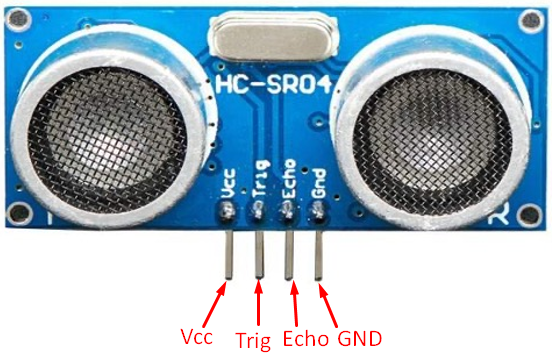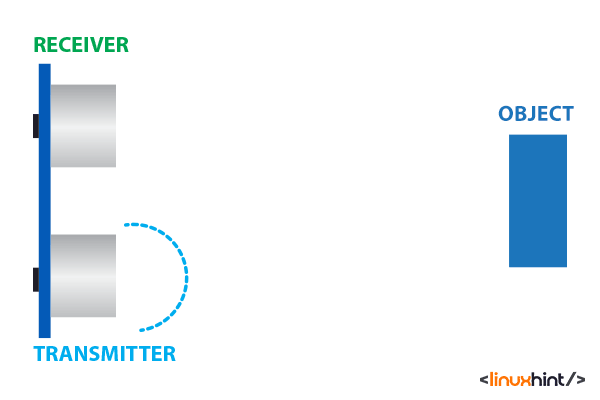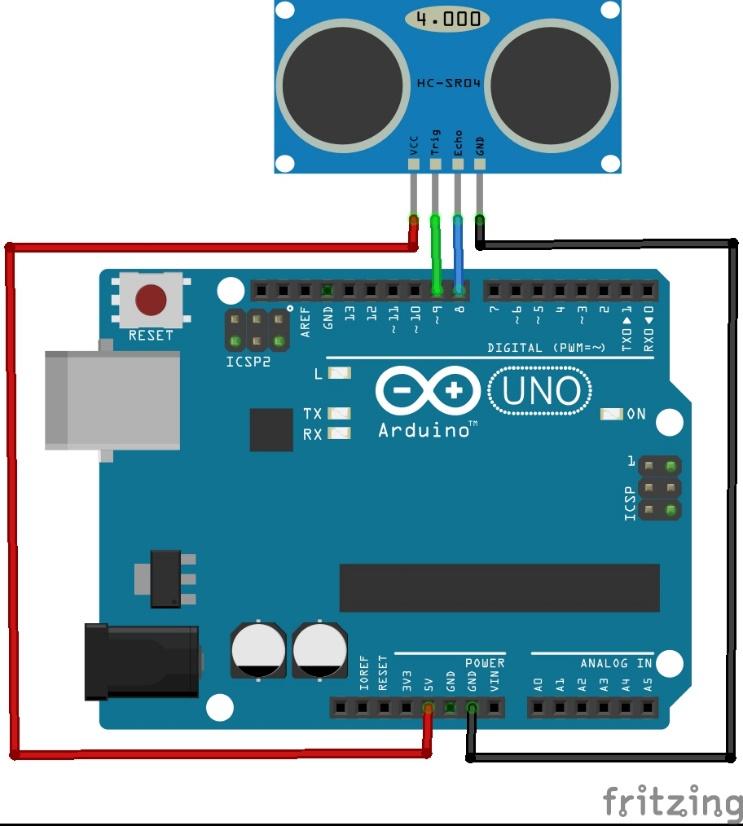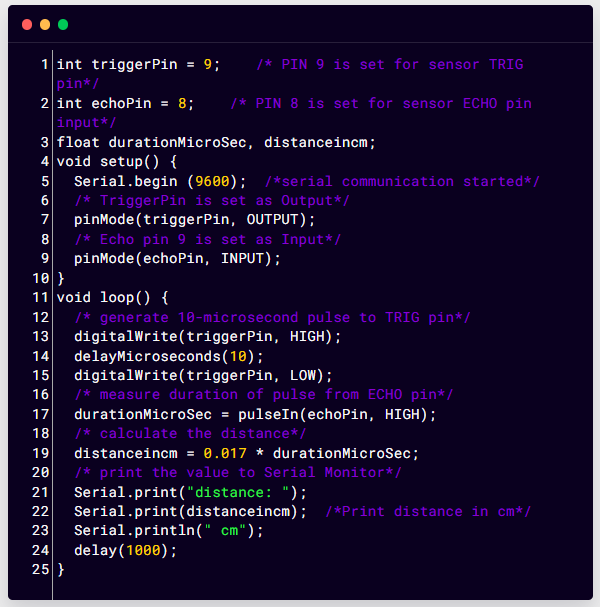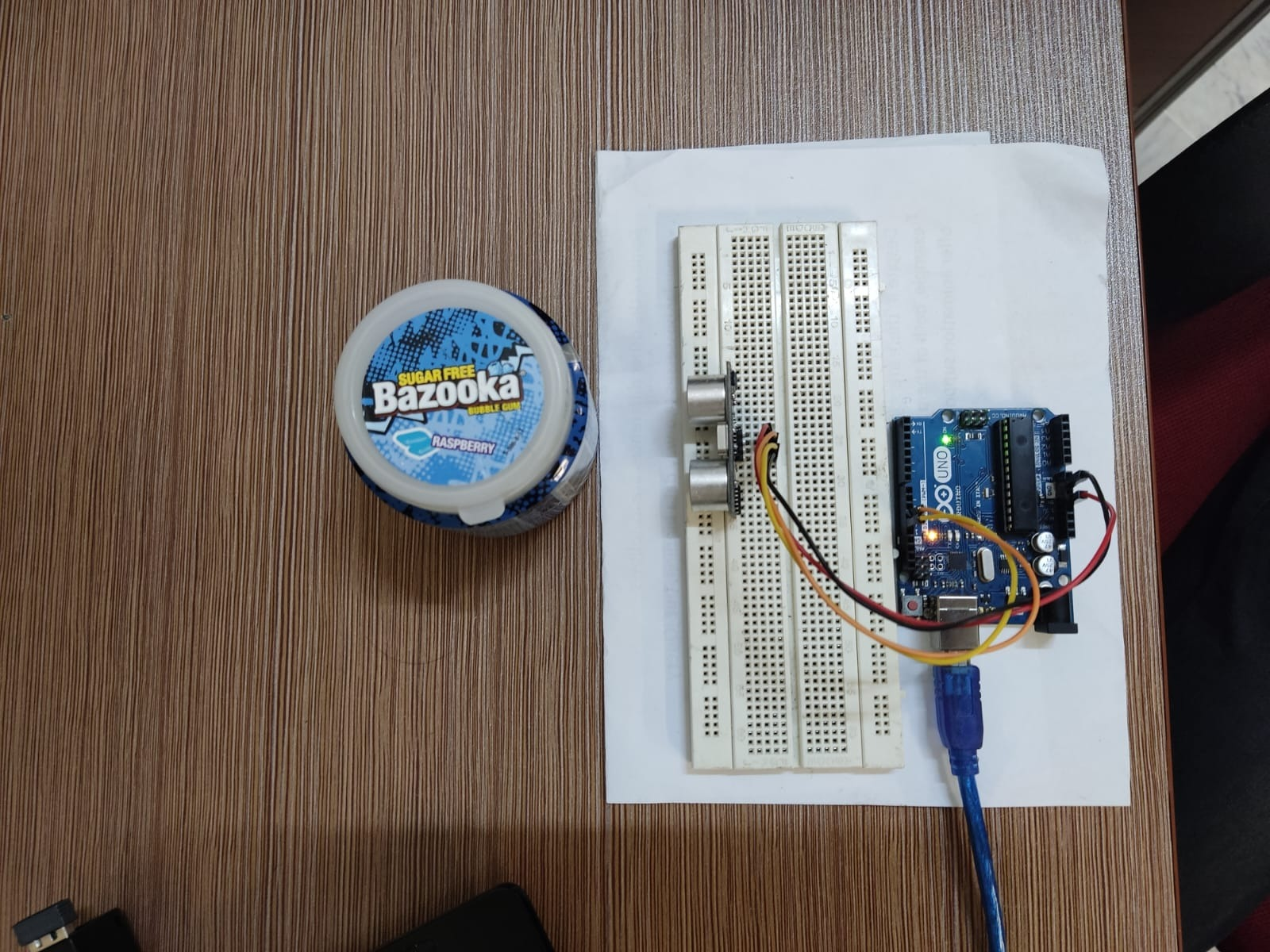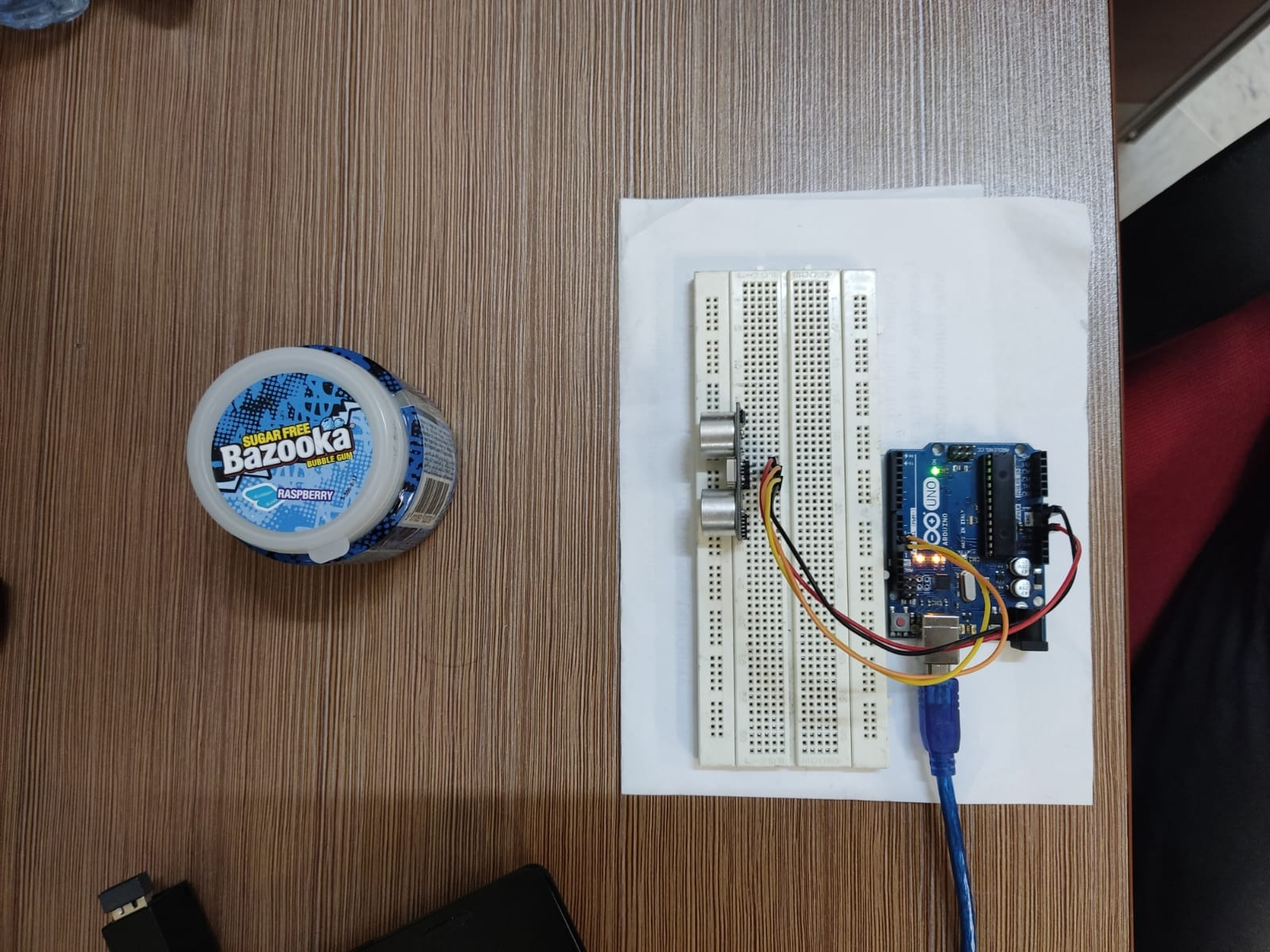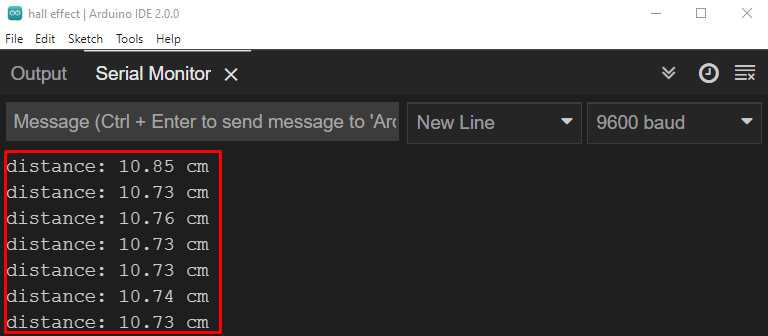Ultrasonic Sensor with Arduino
HC-SR04 is one of the most used ultrasonic sensors with Arduino. This sensor determines how far an object is. It uses SONAR to determine object distance. Normally it has a good range of detection with accuracy of 3mm however sometimes it is difficult to measure soft materials distance like cloth. It comes with a built-in transmitter and receiver. Following table describes the technical specifications of this sensor.
| Characteristics | Value |
| Operating Voltage | 5V DC |
| Operating Current | 15mA |
| Operating Frequency | 40KHz |
| Min Range | 2cm/ 1 inch |
| Max Range | 400cm/ 13 feet |
| Accuracy | 3mm |
| Measuring Angle | <15 degree |
Pinout
Ultrasonic sensor HC-SR04 has four pins:
- Vcc: Connect this pin to Arduino 5V
- Gnd: Connect this pin with Arduino GND
- Trig: This pin receives controlling signal from Arduino digital pin
- Echo: This pin sends a pulse or signal back to Arduino. Received back pulse signal is measured to calculate distance.
How Ultrasonic Works
Once the ultrasonic sensor is connected to Arduino, the microcontroller will generate a signal pulse on the Trig pin. After sensors receive an input at the Trig pin an ultrasonic wave is automatically generated. This emitted wave will hit the surface of an obstacle or object whose distance we must measure. After that, the ultrasonic wave will bounce back to the receiver terminal of the sensor.
Ultrasonic sensor will detect the reflected wave and calculate the total time taken by wave from sensor to object and back to sensor again. Ultrasonic sensor will generate a signal pulse at Echo pin which is connected to Arduino digital pins once the Arduino receives signal from Echo pin it calculates the total distance between object and sensor using Distance-Formula.
How to Connect Arduino with Ultrasonic Sensor
Arduino digital pins generate a 10 microseconds pulse signal which is given to ultrasonic sensor pin 9 while to receive incoming signal from ultrasonic sensor another digital pin is used. Sensor is powered using an Arduino ground and 5V output pin.
| Ultrasonic Sensor Pin | Arduino Pin |
| Vcc | 5V Output Pin |
| Trig | PIN9 |
| Echo | PIN8 |
| GND | GND |
Trig and Echo pins can be connected to any of Arduino digital pins. Below given image represents the wiring diagram of Arduino with HC-SR04 ultrasonic sensor.
Schematics
How to Program Ultrasonic Sensor Using Arduino
To program an ultrasonic sensor connect it with an Arduino using the above diagram. Now we must generate a pulse signal at the Trig pin of the ultrasonic sensor.
Generate a 10-microseconds pulse at pin 9 of Arduino using digitalWrite() and delayMicroseconds() functions.
delayMicroseconds(10);
digitalWrite(9, LOW);
To measure the output from the sensor at pin 8 use pulseIn() function.
Once the pulse is received from the echo pin of the sensor to Arduino pin number 8. Arduino will calculate distance using the above formula.
Code
int echoPin = 8; /* PIN 8 is set for sensor ECHO pin input*/
float durationMicroSec, distanceincm;
void setup() {
Serial.begin (9600); /*serial communication started*/
/* TriggerPin is set as Output*/
pinMode(triggerPin, OUTPUT);
/* Echo pin 9 is set as Input*/
pinMode(echoPin, INPUT);
}
void loop() {
/* generate 10-microsecond pulse to TRIG pin*/
digitalWrite(triggerPin, HIGH);
delayMicroseconds(10);
digitalWrite(triggerPin, LOW);
/* measure duration of pulse from ECHO pin*/
durationMicroSec = pulseIn(echoPin, HIGH);
/* calculate the distance*/
distanceincm = 0.017 * durationMicroSec;
/* print the value to Serial Monitor*/
Serial.print("distance: ");
Serial.print(distanceincm); /*Print distance in cm*/
Serial.println(" cm");
delay(1000);
}
In above code pin 9 is set as trigger while pin 8 is set as the output pin for ultrasonic sensor. Two variables durationMicroSec and distanceincm is initialized. Using pinMode() function pin 9 is set as input while pin 8 is set as output.
In the loop section of code using the formula explained above distance is calculated and the output is printed on serial monitor.
Hardware
Place the object near the ultrasonic sensor.
Output
Approximate distance of 5.9cm is shown by the ultrasonic sensor on the serial monitor.
Now move the object away from ultrasonic sensor.
Output
Approximate distance of 10.8cm is shown by the ultrasonic sensor on the serial monitor.
Conclusion
Ultrasonic sensor is a great tool for measuring distance using contactless operation. It has vast application in DIY electronics projects where we need to work with distance measuring, checking presence of an object and leveling or correct position of any equipment. This article covers all parameters which are needed to operate an ultrasonic sensor with Arduino.

